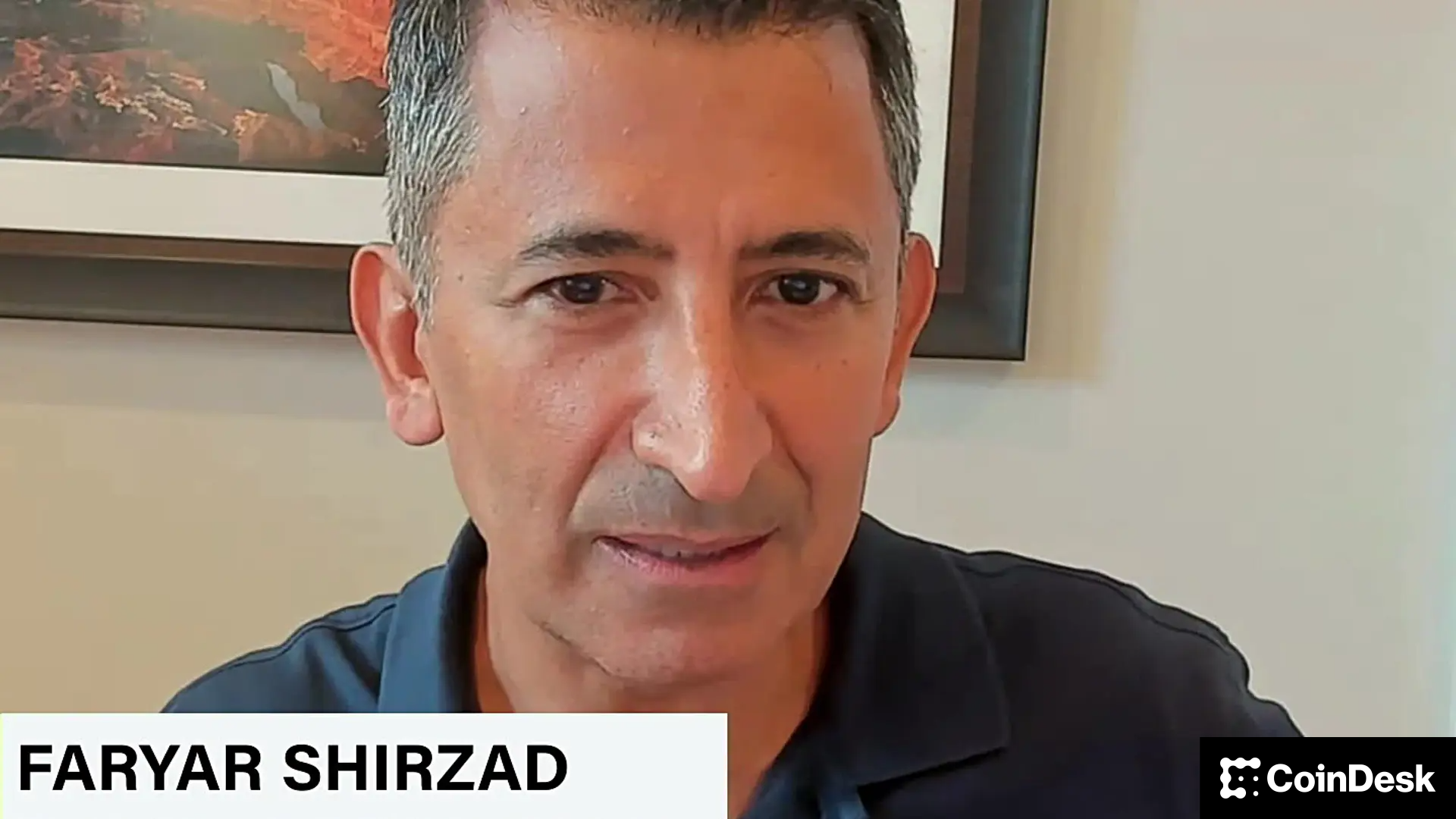Uncategorized
As House Panel Kicks Tires on Stablecoin Bill, Old-School Finance Giants Reveal Shift

After years in which crypto insiders desperately sought to get the attention of the U.S. Congress, the pro-digital-assets witnesses at the latest congressional hearing on stablecoins include a senior executive from the Bank of New York Mellon Corp. and a Davis Polk & Wardwell lawyer who spent his career representing Wall Street.
As congressional momentum rises toward support for crypto legislation in this session, representatives of the traditional financial system are putting its foot on the scales to help tip the balance toward stablecoin regulations. At the House Financial Services Committee hearing on Tuesday, lawyer Randy Guynn argued that the safeguards imposed by the Stablecoin Transparency and Accountability for a Better Ledger Economy Act, known as the STABLE Act, should put issuers of these digital tokens under similar protections to banking.
«If a permitted stablecoin issuer has a properly calibrated reserve of liquid assets, capital buffer and no material amount of liabilities other than its stablecoin liabilities, as contemplated by the STABLE Act, its payment stablecoins should be as safe as insured bank deposits and central bank money,» according to the testimony of Guynn, who has long been among the most prominent Wall Street lawyers on banking compliance.
And just down the witness table from him sat Caroline Butler, the global head of digital assets for BNY Mellon, which Representative Ritchie Torres, a New York Democrat, called the «ultimate expression of the traditional financial system.» Butler said her bank is already offering significant services for issuers such as Circle (USDC) and that the sector needs clarity from the U.S. government.
«What’s very important for the ecosystem is to make sure that with banks that are providing custody, there is implicit trust and confidence in the ecosystem that client assets are indeed protected and protected according to federal legislation and regulation,» she told the House lawmakers.
«We want to be able to participate in the new and evolving options and mechanisms — stablecoins and blockchain technology just being an example of that — so that we can continue to meet the evolving needs of the market and our clients,» Butler said.
The sentiments from proponents of stablecoin regulations echoed what’s been said often in the past, but the sources of that sentiment are more often coming from more traditional corners of finance. The confluence has been happening as the political muscle of the crypto industry — fueled by tens of millions of dollars in help provided to congressional campaigns from crypto sources — has strengthened markedly in Washington, as seen in a recent Senate vote in which a crowd of Democrats joined Republicans to overturn an Internal Revenue Service crypto rule. (The House is expected to vote later Tuesday on whether to join the Senate in that.)
So, crypto has more friends to make legislation more likely, and Wall Street is there for it.
The committee’s ranking Democrat, Maxine Waters, and others from her party urged the stablecoin debate to return to a bill that she and former Republican panel Chairman Patrick McHenry had worked out together across the aisle. Rejecting this current effort, she argued a «need to go back to the drawing board on stablecoins.»
But Representative Sam Liccardo, a California Democrat, noted the transition in Congress, abandoning resistance to acting in some manner on stablecoins. «We’ve moved from discussing whether to regulate to how to regulate,» he said.
Meanwhile in the Senate, Sen. Bill Hagerty’s similar stablecoin legislation called the Guiding and Establishing National Innovation for U.S. Stablecoins Act (GENIUS Act) has been further revised and is heading toward a markup hearing later this week in the Senate Banking Committee.
While still haggling over the approach to stablecoins, the committee also looked Tuesday at legislation banning the creation of a U.S. central bank digital currency (CBDCs). Republicans have run a vigorous campaign against the idea and are looking to further cement President Donald Trump’s executive order to head off the formation of such a digital dollar. The consideration of a U.S. CBDC never reached significant progress in the previous administration, but GOP lawmakers have suggested that the federal government would use it as a tool to spy on citizens, despite comments from officials such as Federal Reserve Chair Jerome Powell that his agency had no interest in managing a hypothetical CBDC.
Uncategorized
ORQO Debuts in Abu Dhabi With $370M in AUM, Sets Sight on Ripple USD Yield

ORQO Group, a new institutional asset manager with $370 million in assets under management, has launched on Tuesday with plans to build out a yield platform for Ripple’s RLUSD stablecoin.
The group, headquartered in Abu Dhabi, consolidates four entities from both traditional finance and digital assets: Mount TFI, a private debt specialist and licensed fund manager in Poland, Monterra Capital, a multi-strategy digital hedge fund in Malta, blockchain engineering studio Nextrope and decentralized finance (DeFi) protocol Soil compliant with MiCA, the EU’s crypto framework.
Already licensed in Poland and Malta, the group is seeking approval from the Financial Services Regulatory Authority at Abu Dhabi Global Market to expand services in the Middle East, a region it sees as a hub for regulated digital asset growth.
«It’s an opportunity to become a global on-chain asset manager,» ORQO CEO Nicholas Motz said in an interview with CoinDesk. «We have all the pieces: the off-chain asset management, and on-chain, too.»
ORQO’s effort is part of a larger trend that’s been reshaping crypto markets: moving traditional financial instruments like private credit, U.S. Treasuries, or trade finance deals onto blockchain networks. The process is also known as tokenization of real-world assets (RWAs). Data from rwa.xyz shows that the RWA market has grown into a nearly $30 billion sector, though it remains tiny compared to traditional finance markets such as the $2 trillion private credit sector. Still, the growth potential is immense: the tokenized RWA market could reach $18.9 trillion by 2033, a joint report by Ripple and BCG projected.
Yield platform Soil is a key piece in ORQO’s gameplan, connecting the firm’s RWA access with crypto capital capital. It aims to provide returns on stablecoins deposits from tokenized private credit, real estate and hedge fund strategies.
As part of the next stage, the firm plans to open several credit pools targeting holders of Ripple’s RLUSD stablecoin in the near future, allowing investors such as institutional treasuries or protocol reserves to earn a yield on their holdings.
Read more: Tokenization of Real-World Assets is Gaining Momentum, Says Bank of America
Uncategorized
Coinbase Policy Chief Pushes Back on Bank Warnings That Stablecoins Threaten Deposits

Contrary to claims from the U.S. banking industry, stablecoins do not pose a risk to the financial system, according to the chief policy officer at crypto exchange Coinbase (COIN), Faryar Shirzad. Banks’ claims that they do are are myths crafted to defend their revenues, he wrote in a Tueday blog post.
«The central claim — that stablecoins will cause a mass outflow of bank deposits — simply doesn’t hold up,» Shirzad wrote. «Recent analysis shows no meaningful link between stablecoin adoption and deposit flight for community banks and there’s no reason to believe big banks would fare any worse.»
Larger lenders still hold trillions of dollars at the Federal Reserve and if deposits were really at risk, he argued, they would be competing harder for customer funds by offering higher interest rates rather than parking cash at the central bank
According to Shirzad, the real reason for banks’ opposition is the payments business. Stablecoins, digital tokens whose value is pegged to a real-life asset such as the dollar, offer faster and cheaper ways to move money, threatening an estimated $187 billion in annual swipe-fee revenue for traditional card networks and banks.
He compared the current pushback to earlier battles against ATMs and online banking, when incumbents warned of systemic dangers but, he said, were ultimately trying to protect entrenched profits.
Shirzad also dismissed reports predicting trillions in potential outflows from deposits into stablecoins, whose total market cap is around $290 billion, according to data from CoinGecko. He stressed that stablecoins are primarily used as payment tools — for trading digital assets or sending funds abroad — not as long-term savings products.
Someone purchasing stablecoins to settle with an overseas supplier, he argued, is opting for a more efficient transaction method the going through their bank, not pulling money from a savings account.
He urged banks to embrace the technology instead of resisting it, saying stablecoin rails could cut settlement times, lower correspondent banking costs and provide round-the-clock payments. Those institutions willing to adapt, he wrote, stand to benefit from the shift.
The U.K., too, faces concerns about the effect of stablecoins on the financial industry.
The Financial Times reported Monday that the Bank of England is considering setting limits on how many «systemic» stablecoins people and companies can hold — setting thresholds as low as 10,000 pounds ($13,600) for individuals and about 10 million pounds for businesses.
Officials define systemic stablecoins as those already widely used for U.K. payments or expected to become so, and say the caps are needed to prevent sudden deposit outflows that could weaken lending and financial stability.
Uncategorized
Deutsche Börse’s Crypto Finance Unveils Connected Custody Settlement for Digital Assets

Crypto Finance, a subsidiary of Deutsche Börse Group, unveiled AnchorNote, a system designed for institutional clients who want to trade digital assets without moving them out of regulated custody.
The system integrates BridgePort, a network of crypto exchanges and custodians, enabling off-exchange settlement and connectivity to multiple trading venues. By keeping assets in custody while allowing real-time collateral movement, AnchorNote aims to improve capital efficiency and reduce counterparty risk, according to a press release.
The service allows clients to set up dedicated trading lines, with BridgePort handling messaging between venues and Crypto Finance acting as collateral custodian, the press release said. Institutions can manage collateral through a dashboard or integrate the service directly into their existing infrastructure using APIs, it said. APIs, or application programming interfaces, allow software programs to communicate directly with one another.
“Institutional clients face a constant tradeoff between security and capital efficiency,” said Philipp E. Dettwiler, head of custody and settlement at Crypto Finance. “AnchorNote is designed to bridge that gap.”
For traders, the setup eliminates the need for pre-funding exchanges while providing immediate access to liquidity across platforms. In practice, a Swiss bank could pledge bitcoin held in custody and deploy it instantly across multiple trading venues without moving the coins on-chain.
The rollout begins in Switzerland, with Crypto Finance planning to expand across Europe.
-

 Business11 месяцев ago
Business11 месяцев ago3 Ways to make your business presentation more relatable
-

 Fashion11 месяцев ago
Fashion11 месяцев agoAccording to Dior Couture, this taboo fashion accessory is back
-

 Entertainment11 месяцев ago
Entertainment11 месяцев ago10 Artists who retired from music and made a comeback
-

 Entertainment11 месяцев ago
Entertainment11 месяцев ago\’Better Call Saul\’ has been renewed for a fourth season
-

 Entertainment11 месяцев ago
Entertainment11 месяцев agoNew Season 8 Walking Dead trailer flashes forward in time
-

 Business11 месяцев ago
Business11 месяцев ago15 Habits that could be hurting your business relationships
-

 Entertainment11 месяцев ago
Entertainment11 месяцев agoMeet Superman\’s grandfather in new trailer for Krypton
-

 Entertainment11 месяцев ago
Entertainment11 месяцев agoDisney\’s live-action Aladdin finally finds its stars





